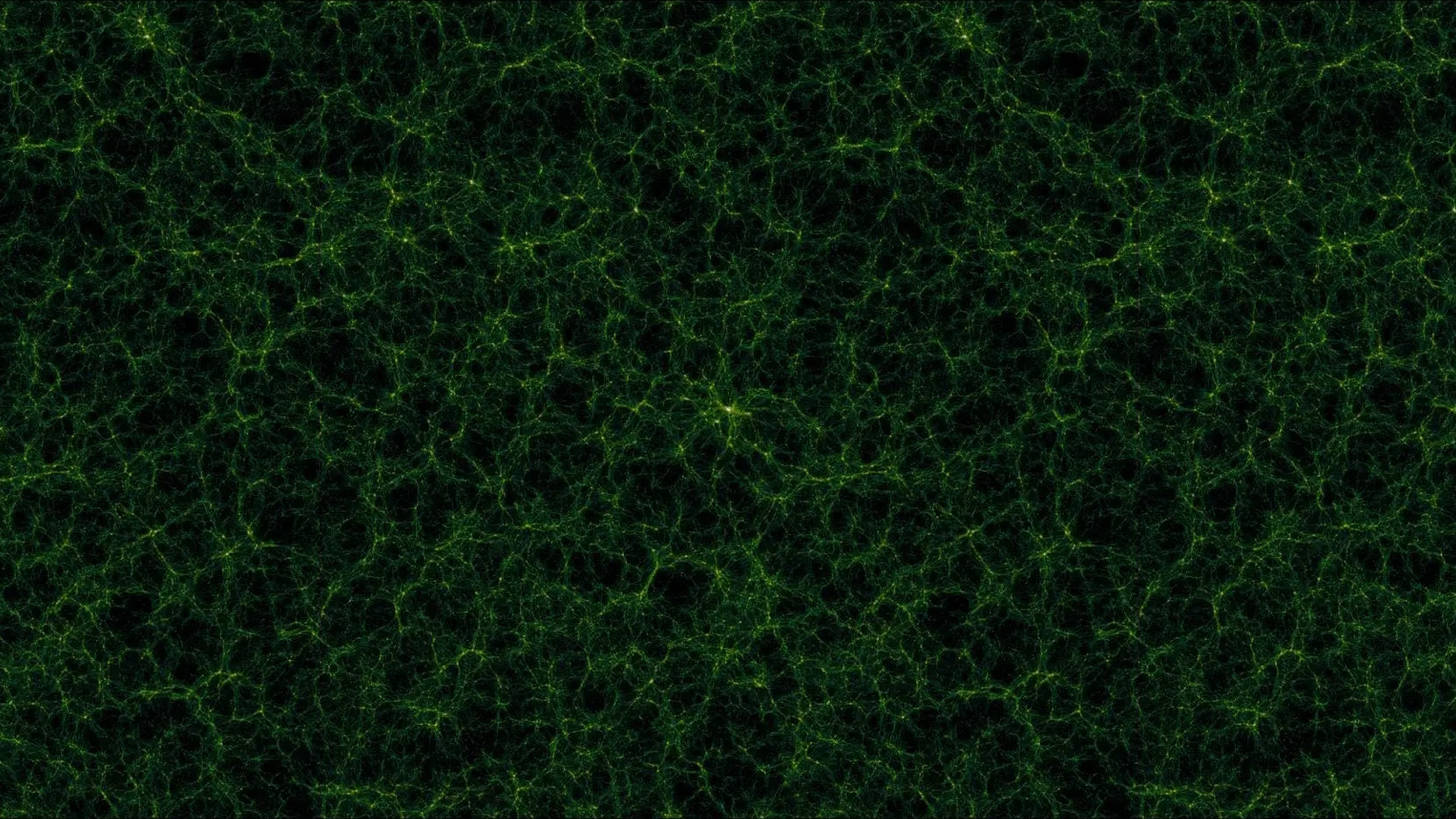Messier Monday: Orion’s second Nebula, M43
The Great Orion Nebula is so great, it needed a second Messier object all to itself!
“Be not afraid of greatness. Some are born great, some achieve greatness, and others have greatness thrust upon them.” –William Shakespeare
Of all the spectacular deep-sky objects in our heavens, from the bright to the ultra-faint, only one is so large, so massive and so close that it appears in many different locations and forms across the sky: the giant star-forming, molecular cloud complex in the constellation of Orion. In fact, not only are multiple famous nebulae a part of it, including the horsehead nebula, the flame nebula and Barnard’s loop, but an incredible three unique Messier objects as well!
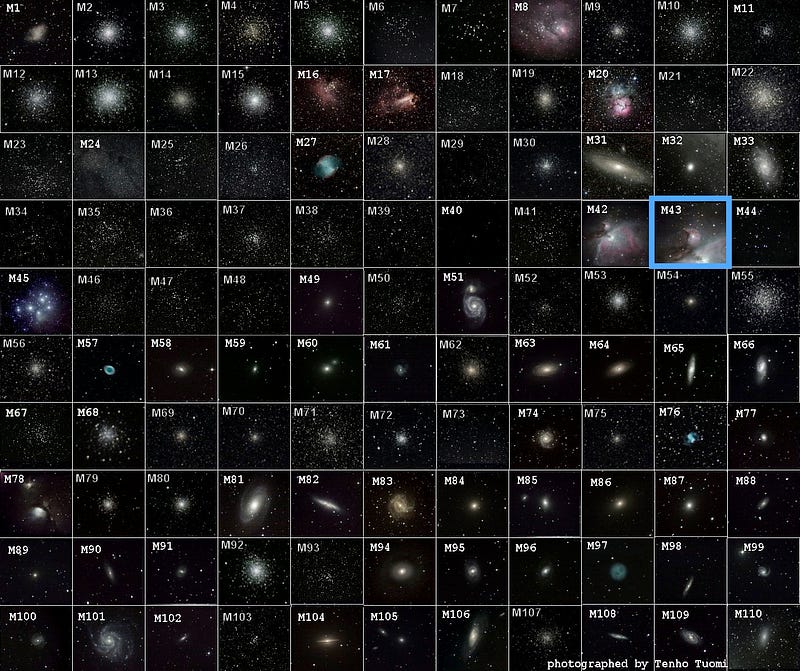
The faintest of the three is today’s object, Messier 43, also known as De Mairan’s Nebula after its discoverer, and is actually impossible to miss if you’re checking out one of the brightest and most clearly visible nebulae in the entire sky (even to the naked eye), the Great Orion Nebula, M42.
Here’s how to find its slightly lesser-well-known companion.
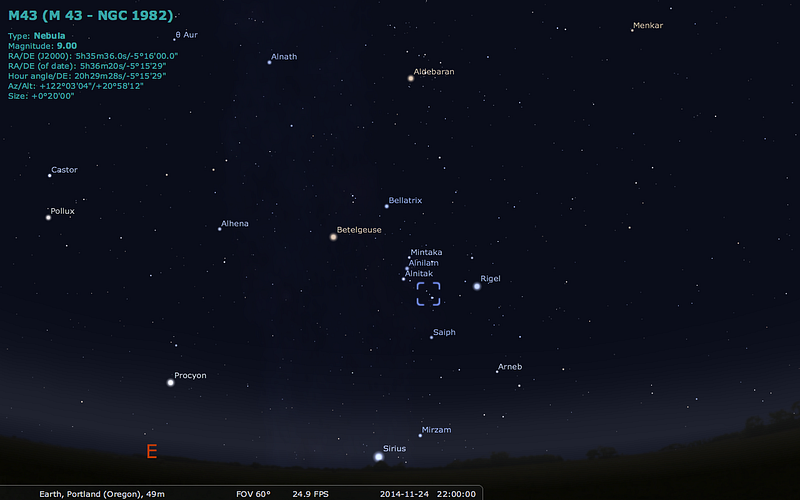
A few hours after sunset — although this will happen earlier and earlier as winter comes on — the unmistakable constellation of Orion will rise in the eastern portion of the sky, heralded by the incredibly bright stars Betelgeuse (in red) and Rigel (in blue), along with the three bright, blue stars of Orion’s belt.
Just south of the belt, however, is a bright, fuzzy region sometimes called Orion’s sword (but we know better), and if we focus our attention there, Messier 43 will be within our reach.
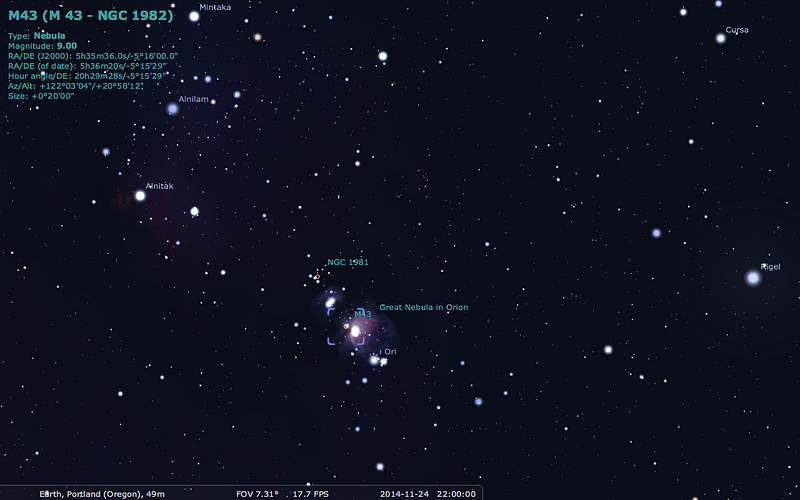
There’s a very bright star that shines on the south side of the nebular complex there, ι Orionis, and two fainter “light clumps” a little to the north. Through even a pair of basic binoculars or the most primitive telescope you can get your hands on, the views of this region are clear and magnificent. And with long-exposure, multi-wavelength photography, they can become downright spectacular!

Of course, the “great” nebula is the main part of it, and that’s Messier 42. Further to the north, in blue, is what’s known as the Running Man nebula, after the shadowy appearance of the dust lanes in NGC 1977. But do you see how there’s a dark dust lane dividing the great nebula into two parts, one of which is about ten times larger than the other?
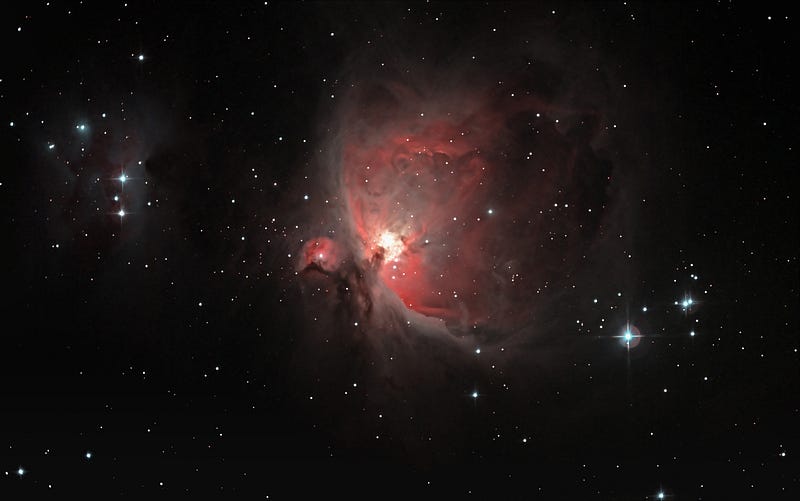
That smaller part is what Messier 43, or De Mairan’s nebula, actually is! According to Messier himself:
Position of the little star surrounded by nebulosity & which is below the nebula of the sword of Orion.
But perhaps more interesting is to look at what the first long-exposure images of this nebula — clearly distinct from its larger, more easily viewed counterpart — allowed us to see:
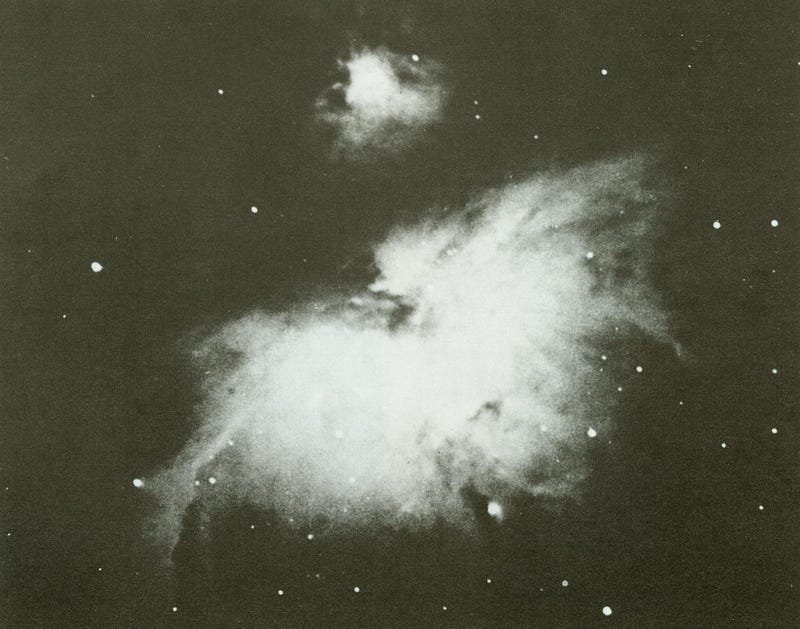
and to combine that with De Mairan’s initial (incorrect, but still interesting) description of what he thought he was looking at:
Finally I will add that close to the luminous space in Orion, one sees the star d of Huygens currently (1731) surrounded by a brilliance very similar to that which produces, as I believe, the atmosphere of our Sun, if it were dense enough & extensive enough to be visible in Telescopes at a similar distance.
As it turns out, there are stars in there, and there are the same elements as are found in the atmosphere of the Sun. But there’s much more to the story than that!
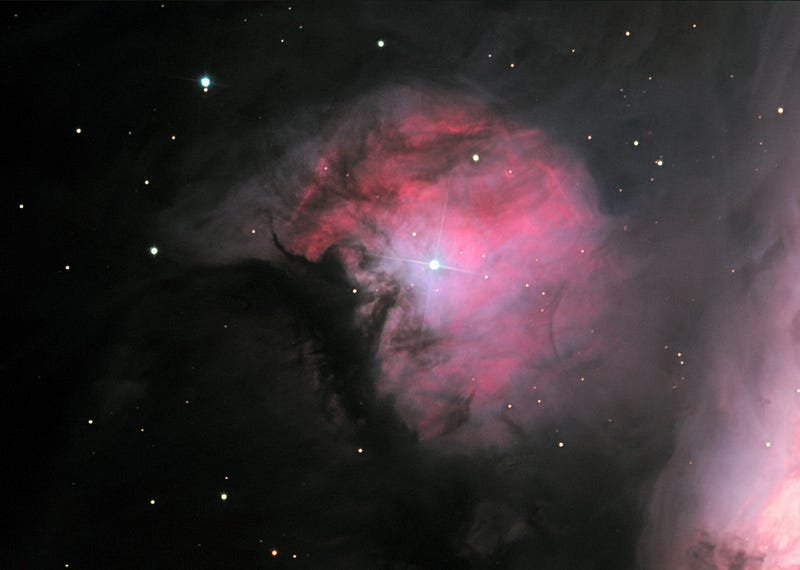
The brightest star in there is a young, hot and ultra-massive blue star, most probably destined to go supernova in only a few million years. The “red” color in the image above is hydrogen gas that’s been ionized, where the electrons are recombining with the nuclei to emit that characteristic color at exactly 636.5 nanometers.
At the center, you see that the color changes to blue, and that’s because of the neutral gas-and-dust reflecting the blue light from the central star itself!
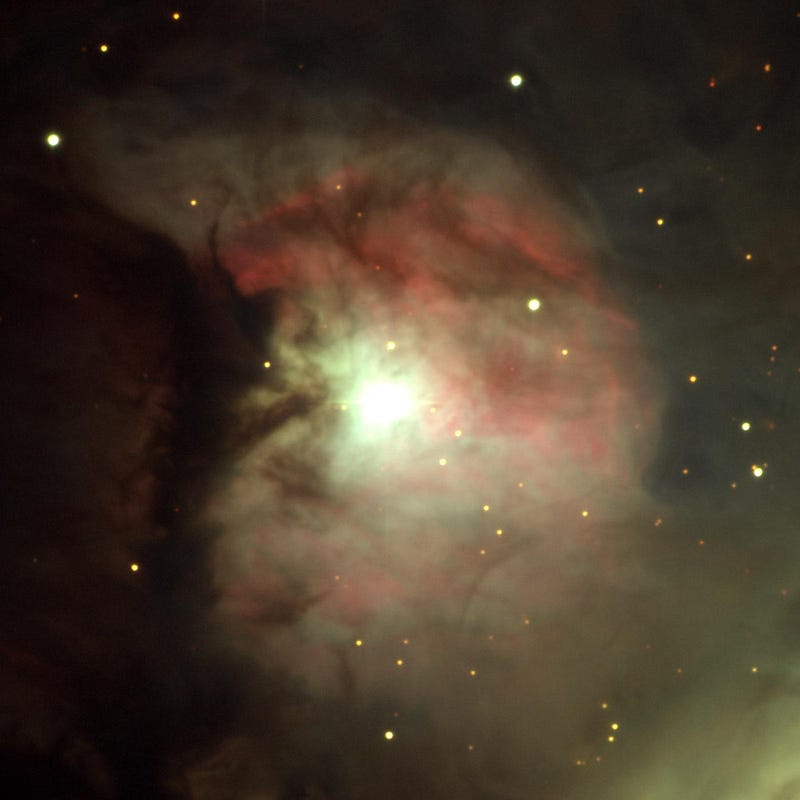
A closer inspection reveals that there are actually a great many young stars that have formed inside, but it’s only the most massive, most luminous ones that dominate. Deep within the dust, here, it’s probable that there are at least hundreds of additional stars simply beyond our power to view them.
Furthermore, what’s incredibly interesting is that the bright, central star would have passed within just 109 light-years of us some 9 million years ago based on its current orbit, making it one of the brightest stars in our sky. But it probably didn’t exist that long ago, having formed much more recently than that!
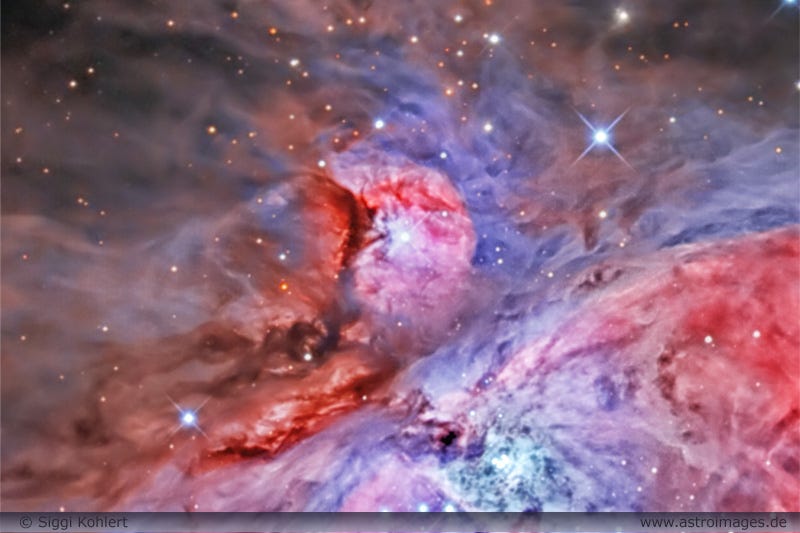
It’s hard to tell with all the dust in there, but this is still an extremely active area of star formation, with plenty of protostars and the gas that’s continuing to grow them present.
To get a better handle on what’s happening in Messier 43, let’s take a look in the infrared, courtesy of Spitzer!
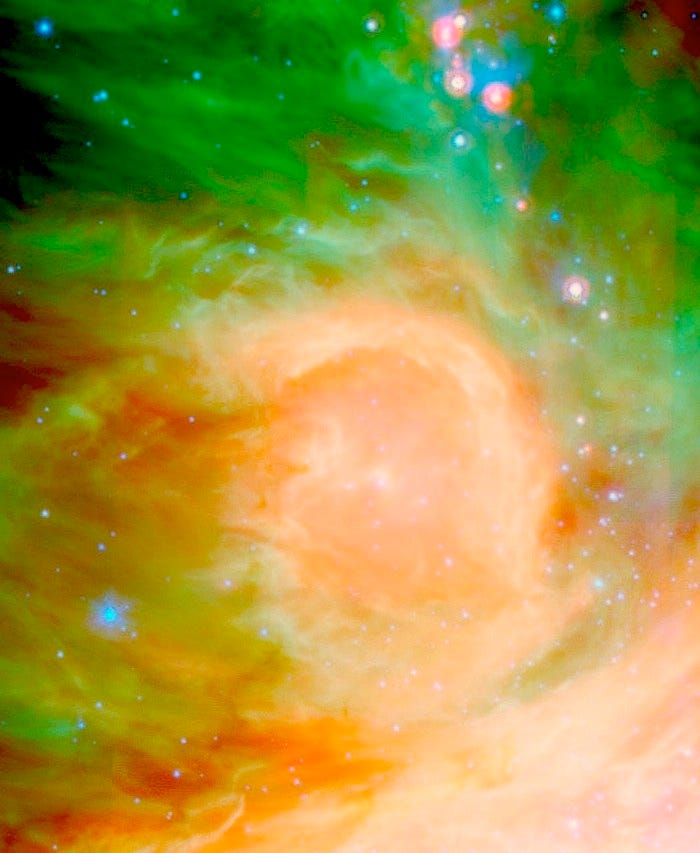
Or, if you prefer going a little farther into the infrared, check out the view from WISE.
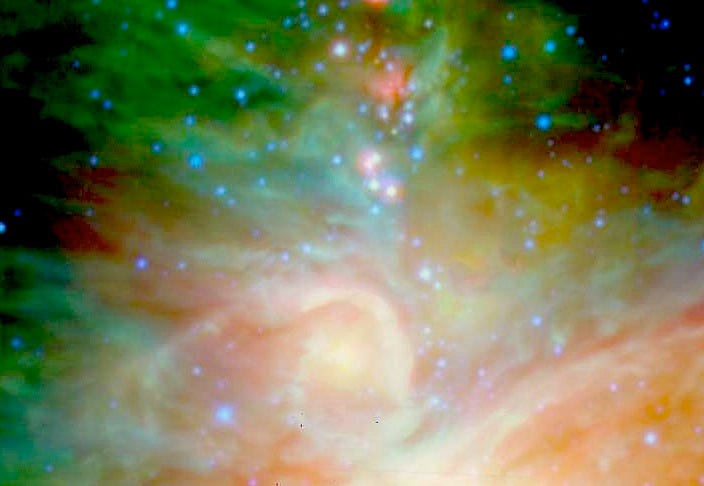
This region is clearly quite saturated, giving off a lot of infrared emission in many different wavelength bands. This is most likely due to the fact that there’s not only a ton of gas and dust of many different temperatures present, but also hot young stars, proto-stars (in the orangish-red colors), and transition regions between these many different facets.
If we just look in visible light, we’re unlikely to appreciate the full suite of this nuance.
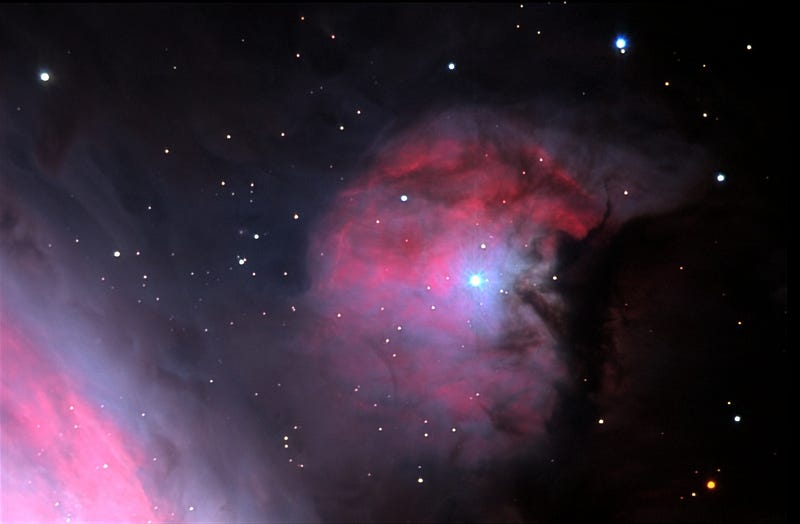
But a multi-wavelength view from Hubble — extending into the near-infrared — can accomplish something incredible, allowing us to see not only the full suite of what our eyes can, but also to give us a window into the dusty nuances that elude the visible-light portion of the electromagnetic spectrum.
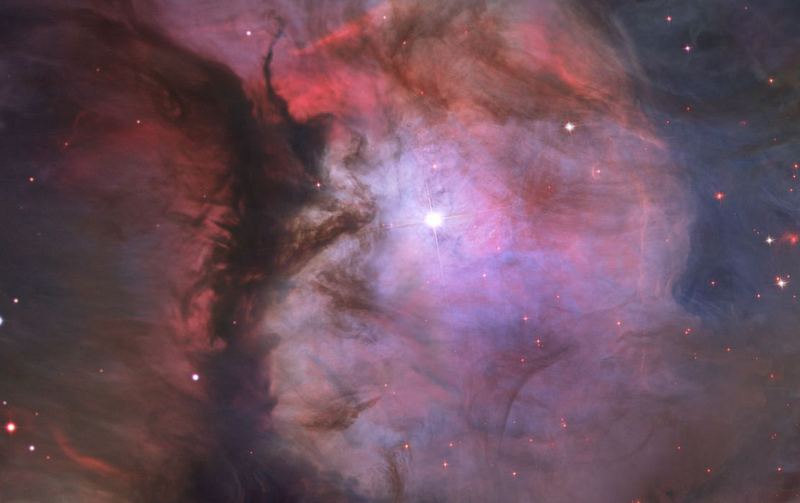
Whereas the full, main Orion Nebula has many stars illuminating it, there’s only one primary star giving rise to this one, hence it’s often known as either the little, small or miniature Orion Nebula.
But if we decide to dive in to the regions away from the center, where collapsing protostars rule the roost, Hubble can give us a glimpse into that like nothing else.
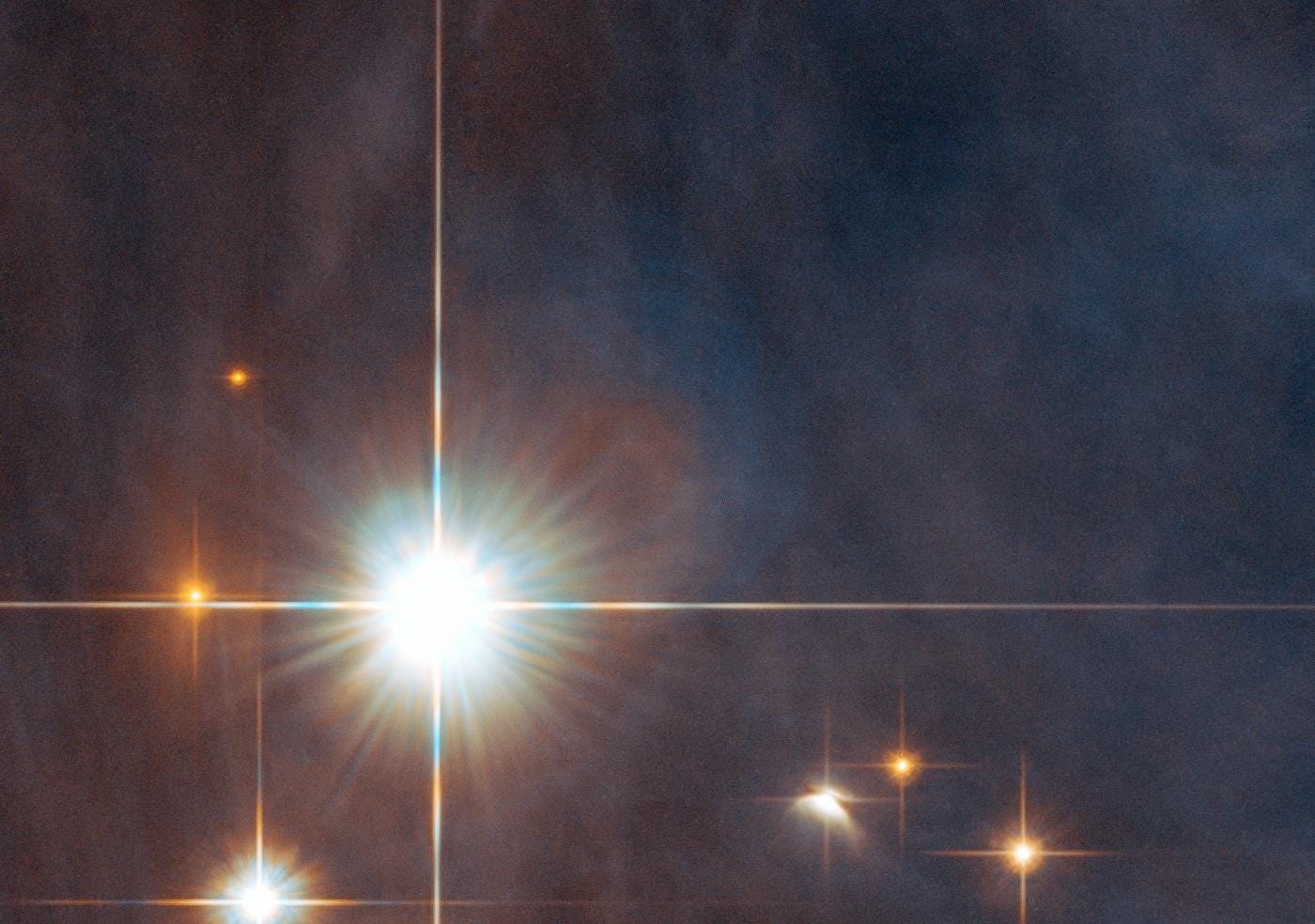
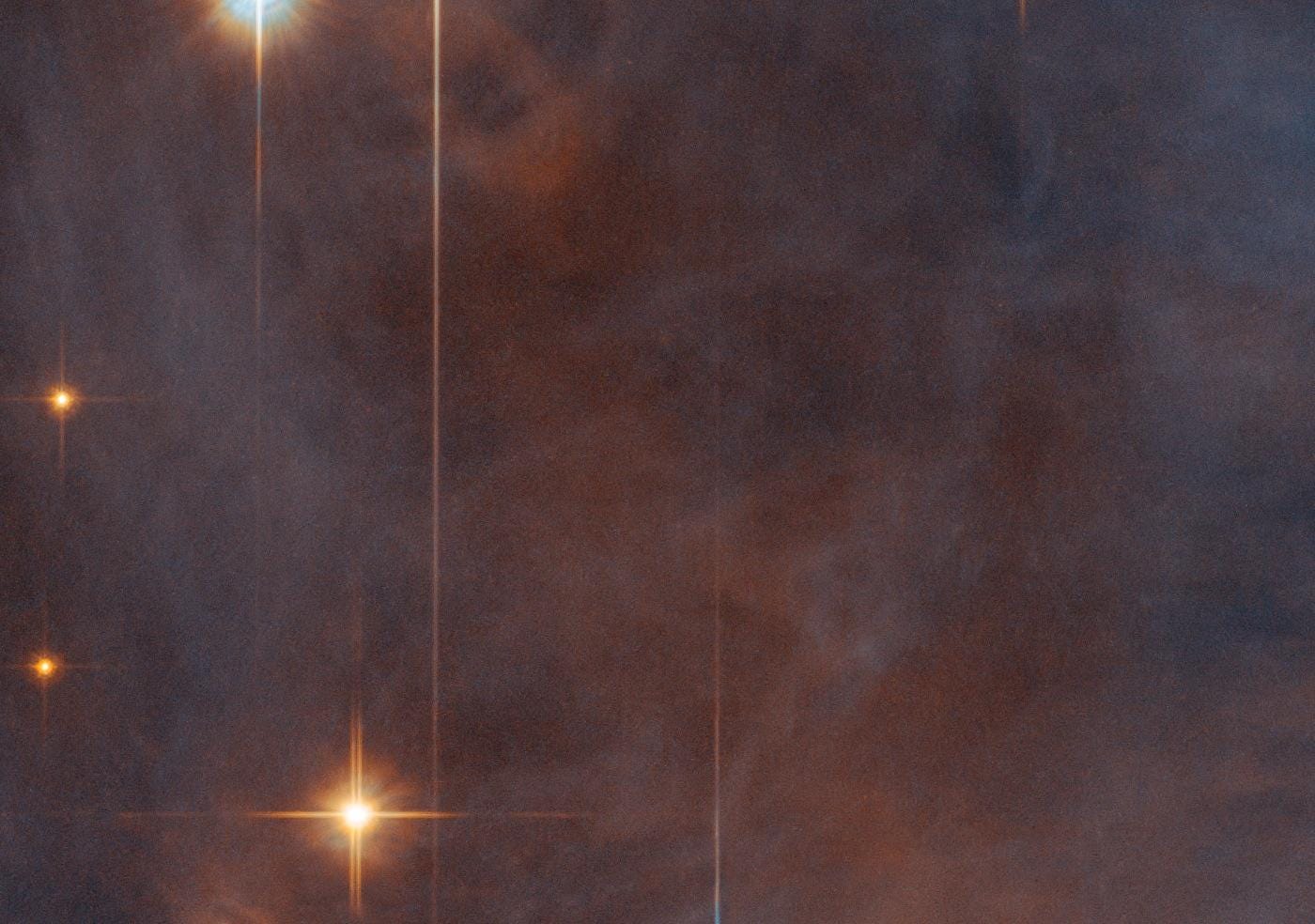
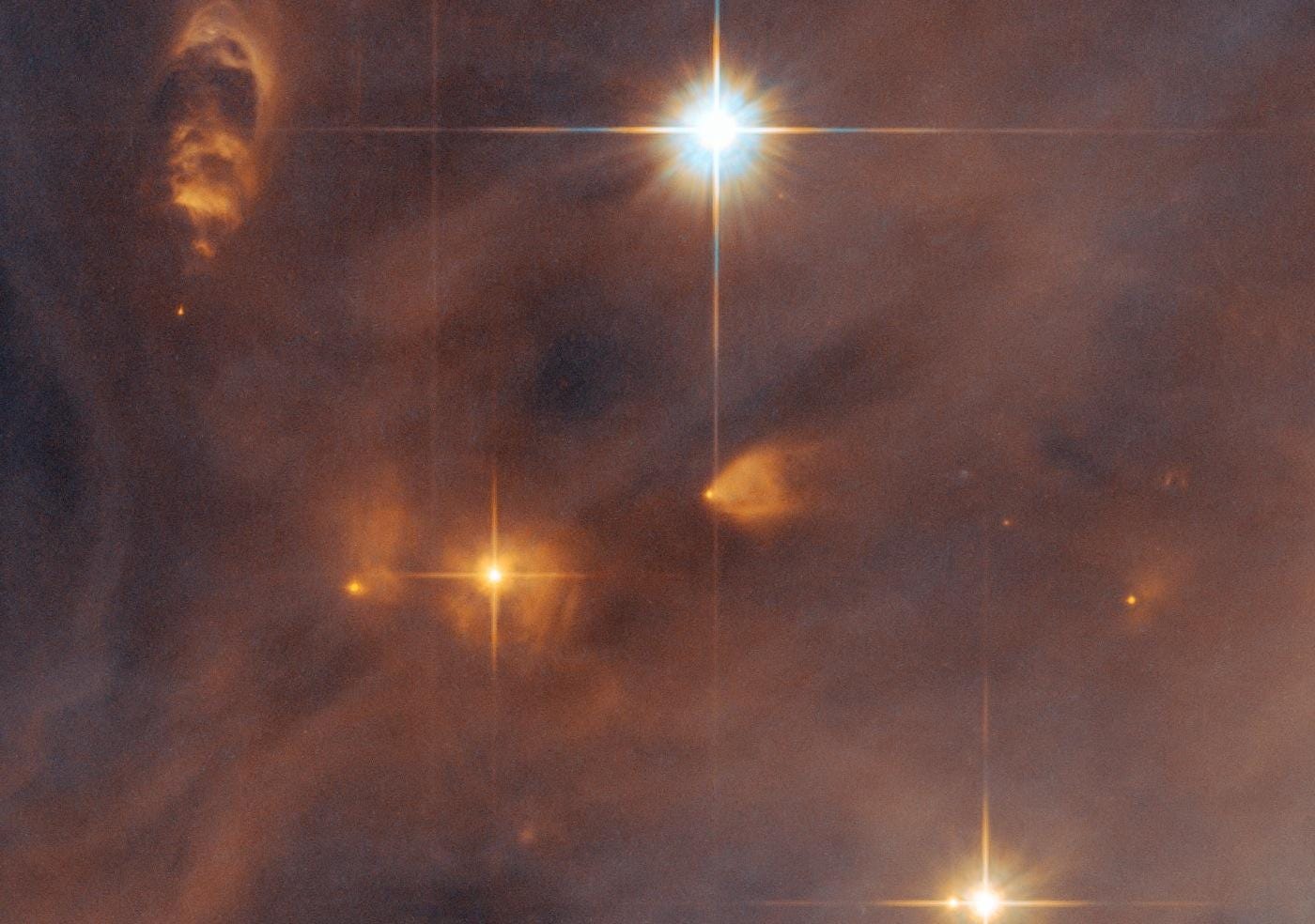
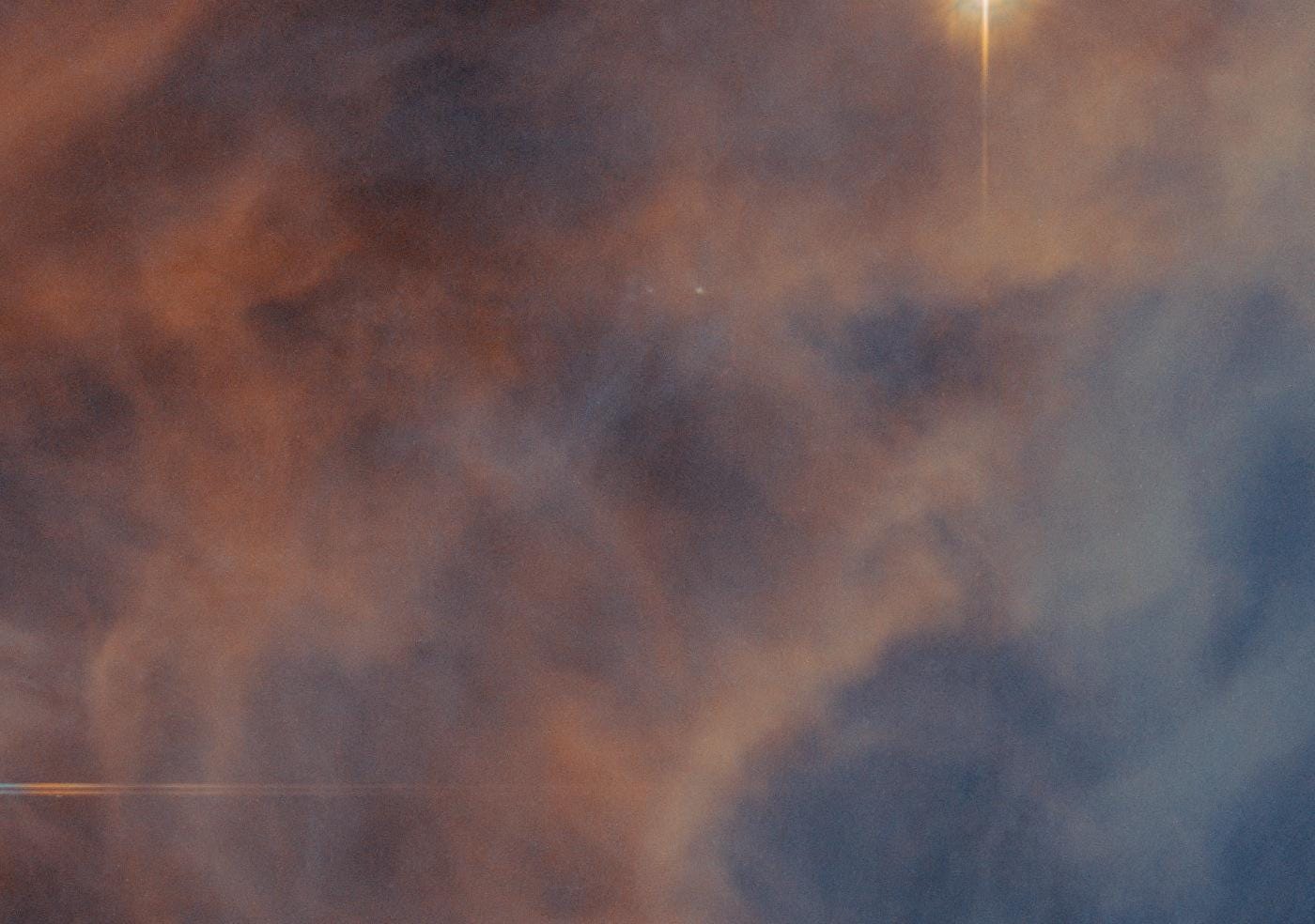
And that’s one of the youngest, closest young regions of star formation to us, where the next generation of solar systems are presently being born!
That also takes us to the very end of our long-running, 110-object saga of Messier Monday here on Starts With A Bang! If you missed even a single one, take a look back at all our previous 110 Messier Mondays here:
- M1, The Crab Nebula: October 22, 2012
- M2, Messier’s First Globular Cluster: June 17, 2013
- M3, Messier’s First Original Discovery: February 17, 2014
- M4, A Cinco de Mayo Special: May 5, 2014
- M5, A Hyper-Smooth Globular Cluster: May 20, 2013
- M6, The Butterfly Cluster: August 18, 2014
- M7, The Most Southerly Messier Object: July 8, 2013
- M8, The Lagoon Nebula: November 5, 2012
- M9, A Globular from the Galactic Center: July 7, 2014
- M10, A Perfect Ten on the Celestial Equator: May 12, 2014
- M11, The Wild Duck Cluster: September 9, 2013
- M12, The Top-Heavy Gumball Globular: August 26, 2013
- M13, The Great Globular Cluster in Hercules: December 31, 2012
- M14, The Overlooked Globular: June 9, 2014
- M15, An Ancient Globular Cluster: November 12, 2012
- M16, The Eagle Nebula: October 20, 2014
- M17, The Omega Nebula: October 13, 2014
- M18, A Well-Hidden, Young Star Cluster: August 5, 2013
- M19, The Flattened Fake-out Globular: August 25, 2014
- M20, The Youngest Star-Forming Region, The Trifid Nebula: May 6, 2013
- M21, A Baby Open Cluster in the Galactic Plane: June 24, 2013
- M22, The Brightest Messier Globular: October 6, 2014
- M23, A Cluster That Stands Out From The Galaxy: July 14, 2014
- M24, The Most Curious Object of All: August 4, 2014
- M25, A Dusty Open Cluster for Everyone: April 8, 2013
- M26, The Could-Be-Better Cluster: November 3, 2014
- M27, The Dumbbell Nebula: June 23, 2014
- M28, The Teapot-Dome Cluster: September 8, 2014
- M29, A Young Open Cluster in the Summer Triangle: June 3, 2013
- M30, A Straggling Globular Cluster: November 26, 2012
- M31, Andromeda, the Object that Opened Up the Universe: September 2, 2013
- M32, The Smallest Messier Galaxy: November 4, 2013
- M33, The Triangulum Galaxy: February 25, 2013
- M34, A Bright, Close Delight of the Winter Skies: October 14, 2013
- M35, An All-Season Cluster: November 17, 2014
- M36, A High-Flying Cluster in the Winter Skies: November 18, 2013
- M37, A Rich Open Star Cluster: December 3, 2012
- M38, A Real-Life Pi-in-the-Sky Cluster: April 29, 2013
- M39, The Closest Messier Original: November 11, 2013
- M40, Messier’s Greatest Mistake: April 1, 2013
- M41, The Dog Star’s Secret Neighbor: January 7, 2013
- M42, The Great Orion Nebula: February 3, 2014
- M43, Orion’s Second Nebula: November 24, 2014
- M44, The Beehive Cluster / Praesepe: December 24, 2012
- M45, The Pleiades: October 29, 2012
- M46, The ‘Little Sister’ Cluster: December 23, 2013
- M47, A Big, Blue, Bright Baby Cluster: December 16, 2013
- M48, A Lost-and-Found Star Cluster: February 11, 2013
- M49, Virgo’s Brightest Galaxy: March 3, 2014
- M50, Brilliant Stars for a Winter’s Night: December 2, 2013
- M51, The Whirlpool Galaxy: April 15th, 2013
- M52, A Star Cluster on the Bubble: March 4, 2013
- M53, The Most Northern Galactic Globular: February 18, 2013
- M54, The First Extragalactic Globular: September 22, 2014
- M55, The Most Elusive Globular Cluster: September 29, 2014
- M56, The Methuselah of Messier Objects: August 12, 2013
- M57, The Ring Nebula: July 1, 2013
- M58, The Farthest Messier Object (for now): April 7, 2014
- M59, An Elliptical Rotating Wrongly: April 28, 2014
- M60, The Gateway Galaxy to Virgo: February 4, 2013
- M61, A Star-Forming Spiral: April 14, 2014
- M62, The Galaxy’s First Globular With A Black Hole: August 11, 2014
- M63, The Sunflower Galaxy: January 6, 2014
- M64, The Black Eye Galaxy: February 24, 2014
- M65, The First Messier Supernova of 2013: March 25, 2013
- M66, The King of the Leo Triplet: January 27, 2014
- M67, Messier’s Oldest Open Cluster: January 14, 2013
- M68, The Wrong-Way Globular Cluster: March 17, 2014
- M69, A Titan in a Teapot: September 1, 2014
- M70, A Miniature Marvel: September 15, 2014
- M71, A Very Unusual Globular Cluster: July 15, 2013
- M72, A Diffuse, Distant Globular at the End-of-the-Marathon: March 18, 2013
- M73, A Four-Star Controversy Resolved: October 21, 2013
- M74, The Phantom Galaxy at the Beginning-of-the-Marathon: March 11, 2013
- M75, The Most Concentrated Messier Globular: September 23, 2013
- M76, The Little Dumbbell Nebula: November 10, 2014
- M77, A Secretly Active Spiral Galaxy: October 7, 2013
- M78, A Reflection Nebula: December 10, 2012
- M79, A Cluster Beyond Our Galaxy: November 25, 2013
- M80, A Southern Sky Surprise: June 30, 2014
- M81, Bode’s Galaxy: November 19, 2012
- M82, The Cigar Galaxy: May 13, 2013
- M83, The Southern Pinwheel Galaxy, January 21, 2013
- M84, The Galaxy at the Head-of-the-Chain, May 26, 2014
- M85, The Most Northern Member of the Virgo Cluster, February 10, 2014
- M86, The Most Blueshifted Messier Object, June 10, 2013
- M87, The Biggest One of them All, March 31, 2014
- M88, A Perfectly Calm Spiral in a Gravitational Storm, March 24, 2014
- M89, The Most Perfect Elliptical, July 21, 2014
- M90, The Better-You-Look, The Better-It-Gets Galaxy, May 19, 2014
- M91, A Spectacular Solstice Spiral, June 16, 2014
- M92, The Second Greatest Globular in Hercules, April 22, 2013
- M93, Messier’s Last Original Open Cluster, January 13, 2014
- M94, A double-ringed mystery galaxy, August 19, 2013
- M95, A Barred Spiral Eye Gazing At Us, January 20, 2014
- M96, A Galactic Highlight to Ring in the New Year, December 30, 2013
- M97, The Owl Nebula, January 28, 2013
- M98, A Spiral Sliver Headed Our Way, March 10, 2014
- M99, The Great Pinwheel of Virgo, July 29, 2013
- M100, Virgo’s Final Galaxy, July 28, 2014
- M101, The Pinwheel Galaxy, October 28, 2013
- M102, A Great Galactic Controversy: December 17, 2012
- M103, The Last ‘Original’ Object: September 16, 2013
- M104, The Sombrero Galaxy: May 27, 2013
- M105, A Most Unusual Elliptical: April 21, 2014
- M106, A Spiral with an Active Black Hole: December 9, 2013
- M107, The Globular that Almost Didn’t Make it: June 2, 2014
- M108, A Galactic Sliver in the Big Dipper: July 22, 2013
- M109, The Farthest Messier Spiral: September 30, 2013
- M110, Messier’s Final Galaxy: October 27, 2014
Next week, we’ll have a special retrospective on all 110 objects, and then the next Monday will bring something entirely new! I hope you enjoyed it, and stick around; there’s plenty of wonders of the Universe to come!
Leave your comments at the Starts With A Bang forum on Scienceblogs!
